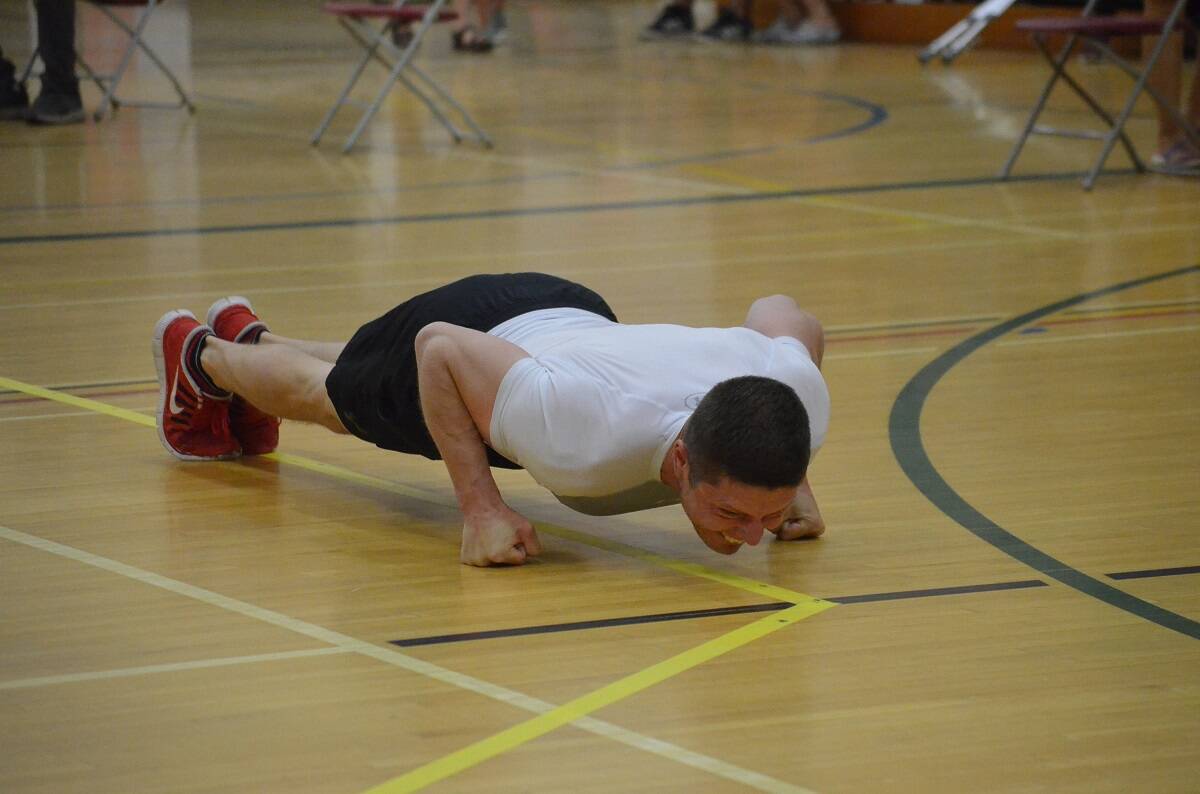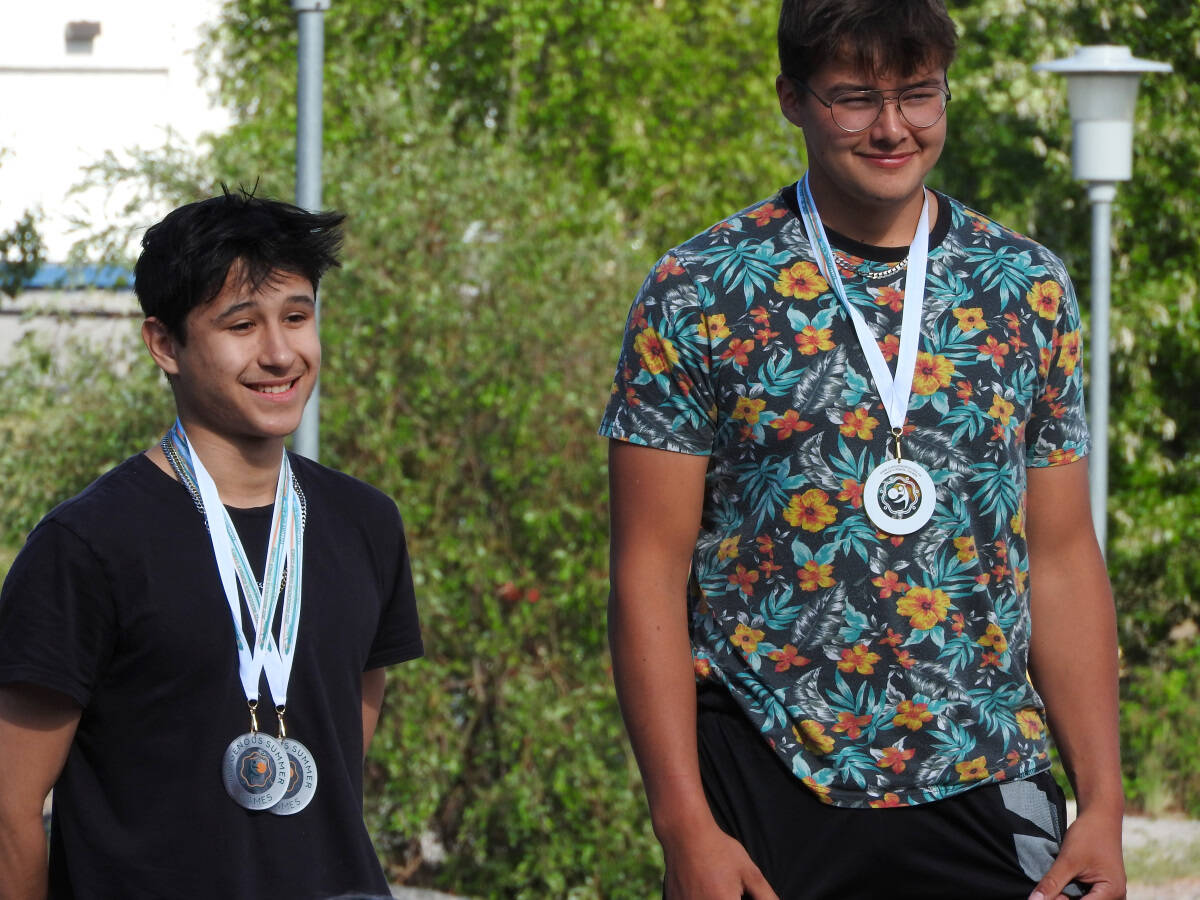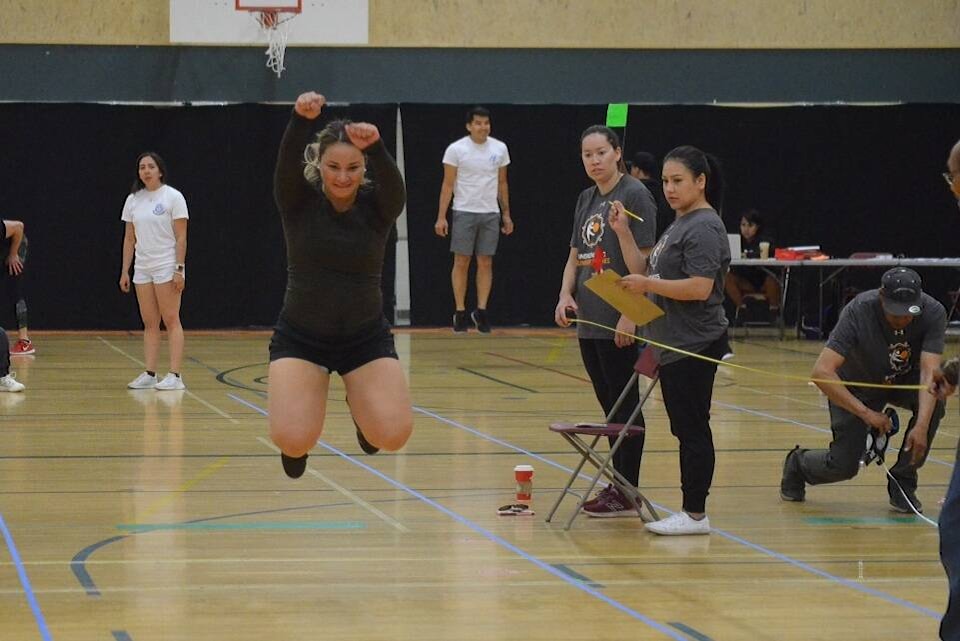And with that, the inaugural Indigenous Summer Games have come to an end.
The four-day event, hosted by the Aboriginal Sports Circle of the NWT, closed with medal presentations at St. Pat’s gymnasium on Sunday afternoon. It was a weekend bringing together close to 100 competitors from the NWT, Yukon and Alaska for a variety Northern and Dene games, such as ring toss, Dene wrestling, one-foot high kick and the knuckle hop, which was the final event of the weekend.
That’s where Chris Stipdonk cemented his legacy as one of the best to ever do it.
Stipdonk, originally from Fort Simpson but now living in Yellowknife, went in as the reigning world record holder in the discipline, setting the mark of 61.2 metres (200 ft., 8 in.), at the 2020 Arctic Winter Games trials in Inuvik. That beat the old record set by Alaska’s Rodney Worl at the 1988 Arctic Winter Games.
Stipdonk won the open men’s division on Sunday by going 63.1 metres (207 ft.) to break his own record by more than two metres (6 ft.).
Bettering his mark was what he said he set out to do.
“I don’t do the knuckle hop for fun and I’m really glad I got that record,” he said. “I knew I would be suffering hard by the time I got to that (200 ft. corner), and I was literally begging my body to keep going forward. I could have easily stopped well before 200 ft., but I would have been so disappointed in myself.”
Stipdonk said anything beyond 200 ft. was a bonus and when he finally collapsed in exhaustion, the officials took their time to measure and make sure.
“I basically fell forward to get myself a few extra inches,” he said. “Every inch counts in this event and I really felt that I was going to get that record. I was 100 per cent confident, even though it was really hard to time the eating and watching my three kids. I’m entertaining them and if I have to eat a banana or drink a half-litre of water, that’s a banana and a half-litre of water I have to carry around before I compete. Knuckle hop is a big strength-to-weight competition.”

But there’s just one problem: it’s an unofficial world record, according to Carson Roche, the Sports Circle’s events manager and head organizer.
Because the event wasn’t sanctioned, like the Arctic Winter Games or the World Eskimo-Indian Olympics (WEIO) in Alaska both are, Roche said it doesn’t count as the official mark.
It will, however, become the standard for future Indigenous Summer Games, as will any other result from this year.
“Getting this sanctioned is something I want to work toward for the future,” said Roche. “I want to establish this as a major event and see the results become part of the official world rankings. I’d love it if someone broke a world record at this and it counted.”
Other athletes had a good weekend overall, such as Ty Lafferty, who won gold in the juvenile boys individual pole push. He also tried his hand at the knuckle hop, which didn’t go as well as he would have liked.
Still, he said it was worth the shot.
“It’s hard on the knuckles, but it’s fun to try something new,” he said. “It was weird getting used to it — it’s my first time — and my sister and girlfriend sort of convinced me to do it.”
Brian Pascal, 13, got to compete in both the knuckle hop and one-foot high-kick on the final day of competition.
He’s too old to compete at the Traditional Games Championships, which has an upper age limit of 12, but he thinks this will become one of the big events for the future.
“I think so,” he said. “I’ll probably compete in it again.”
Roche said the entire event went off better than he could have imagined.
“I had a nice dinner with the officials after it was all done, put my phone on do-not-disturb, and still had about 30 missed calls,” he said with a laugh. “I went into it with no expectations. I wanted it to go as smooth as possible and everyone just put in so much work. We had a great team of people, each day had something different, and it was just a huge success.”

In between the sports, there were performances from the the Tetlit Gwich’in Jiggers from Fort McPherson and Paulatuk Dummers and Dancers, along with a cultural gala hosted by the Yellowknives Dene First Nation (YKDFN) with a fashion show being the main event. A cultural market was also on display, hosted in conjunction with NWT Arts.
“I’ve never done anything like this before,” said Roche. “I’m just so honoured and humbled that it all came together the way it did. So many people from all over were thanking us, telling us it was one of the best events they’ve ever been to. Those people are going to go back to their community and tell their friends and family about it and hopefully, we get more people for next time and make it even bigger.”
The plan is to make this a biennial event and Roche said 2024 is in the works at around the same time as this year. It would make for a busy time as the Arctic Winter Games will be happening in Alaska that March, followed by WEIO in Fairbanks, Alaska in mid-July.
“If you think about it, you would get some of the best traditional sports competitors at three big events in a five-month span,” sad Roche. “It would be tough, but I don’t think it would be a huge problem.”
